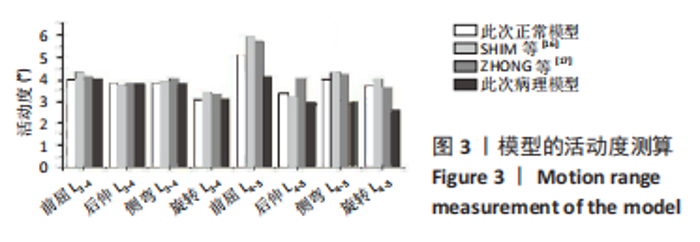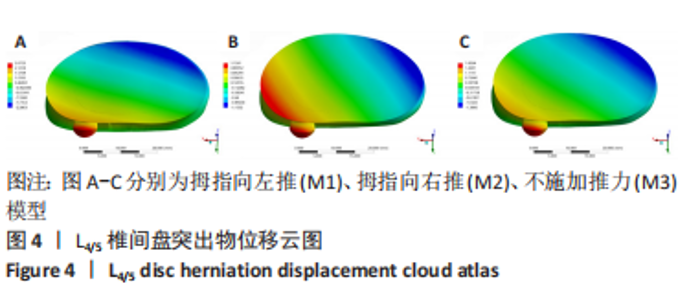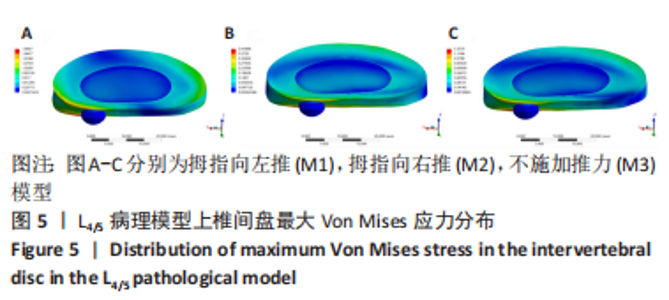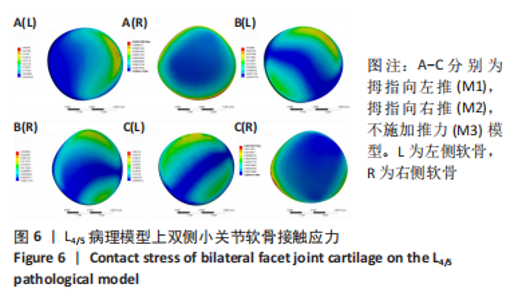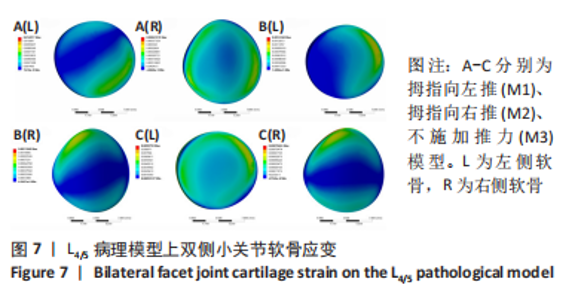[1] CORNIOLA MV, TESSITORE E, SCHALLER K, et al. Lumbar disc herniation-diagnosis and treatment. Rev Med Suisse. 2014;10(454):2376-2382.
[2] DEMIREL A, YORUBULUT M, ERGUN N. Regression of lumbar disc herniation by physiotherapy. Does non-surgical spinal decompression therapy make a difference? Double-blind randomized controlled trial. J Back Musculoskelet Rehabil. 2017;30(5):1015-1022.
[3] 莫灼锚,张人文,唐树杰.“骨错缝筋出槽”、椎间盘退变与脊柱退变性疾病关系探讨[J].时珍国医国药,2017,28(12):2970-2972.
[4] 杜红根,魏晖,蒋忠,等.三种不同脊柱旋转手法治疗腰椎间盘突出症的病例对照研究[J].中国骨伤,2016,29(5):444-448.
[5] 徐海涛,张美超,李义凯,等.坐位旋转手法对正常腰椎间盘内在应力和位移的实时监测的实验研究[J].中国康复医学杂志,2005, 20(8):563-565+641.
[6] 冯伟,冯天有,毕永民,等.借助3D-MRI扫描探讨脊柱(定点)旋转复位法治疗腰椎间盘突出症的临床研究[J].中国骨伤,2013, 26(6):476-480.
[7] FENG Y, GAO Y, YANG W, et al. Reduction in nerve root compression by the nucleus pulposus after Feng’s Spinal Manipulation. Neural Regen Res. 2013;8(12):1139-1145.
[8] WANG F, ZHANG J, FENG W, et al. Comparison of human lumbar disc pressure characteristics during simulated spinal manipulation vs. spinal mobilization. Mol Med Rep. 2018;18(6):5709-5716.
[9] 高春雨,王宝剑,冯敏山,等.运动捕捉坐位腰椎旋转手法运动力学参数及相关影响因素[J].中国骨伤,2019,32(9):802-806.
[10] 李义凯,王国林,徐海涛,等.腰椎旋转手法所致咔哒声与拇指最大推扳力的量效关系研究[J].中国临床解剖学杂志,2004,22(6): 658-660.
[11] ELLINGSON AM, SHAW MN, GIAMBINI H, et al. Comparative role of disc degeneration and ligament failure on functional mechanics of the lumbar spine. Comput Methods Biomech Biomed Engin. 2016;19(9): 1009-1018.
[12] PFIRRMANN CW, METZDORF A, ZANETTI M, et al. Magnetic resonance classification of lumbar intervertebral disc degeneration. Spine (Phila Pa 1976). 2001;26(17):1873-1878.
[13] THOMPSON JP, PEARCE RH, SCHECHTER MT, et al. Preliminary evaluation of a scheme for grading the gross morphology of the human intervertebral disc. Spine (Phila Pa 1976). 1990;15(5):411-415.
[14] TANG S, REBHOLZ BJ. Does lumbar microdiscectomy affect adjacent segmental disc degeneration? A finite element study. J Surg Res. 2013; 182(1):62-67.
[15] LI L, SHEN T, LI YK. A Finite Element Analysis of Stress Distribution and Disk Displacement in Response to Lumbar Rotation Manipulation in the Sitting and Side-Lying Positions. J Manipulative Physiol Ther. 2017;40(8):580-586.
[16] SHIM CS, PARK SW, LEE SH, et al. Biomechanical evaluation of an interspinous stabilizing device, Locker. Spine. 2008;33(22):E820-E827.
[17] ZHONG ZC, HUNG C, LIN HM, et al. The influence of different magnitudes and methods of applying preload on fusion and disc replacement constructs in the lumbar spine: a finite element analysis. Comput Methods Biomech Biomed Engin. 2013;16(9):943-953.
[18] M Z, M A, A AJ, et al. Manipulation Effect on Lumbar Kinematics in Patients with Unilateral Innominate Rotation and Comparison with Asymptomatic Subjects. J Biomed Phys Eng. 2019;9(3):295-302.
[19] 龚成, 谢瑛, 郭伟, 等. 脊柱定点旋转复位手法治疗对 613 例腰椎间盘突出症患者腰椎活动度及活动度对称性的影响[J]. 中华中医药杂志,2021,36(1):599-601.
[20] 胡华,熊昌源,韩国武.旋转手法对腰椎骨盆和股骨上端结构有限元模型的分析[J].中国骨伤,2012,25(7):582-586.
[21] 陈金凤,舒新农,唐树杰,等.腰椎退变对坐位腰椎定点旋转手法疗效影响的有限元分析(英文)[J].J Acupuncture Tuina Sci. 2016, 14(4):295-299.
[22] ZHANG R, MO Z, LI D, et al. Biomechanical Comparison of Lumbar Fixed-Point Oblique Pulling Manipulation and Traditional Oblique Pulling Manipulation in Treating Lumbar Intervertebral Disk Protrusion. J Manipulative Physiol Ther. 2020;43(5):446-456.
[23] YU P, MAO F, CHEN J, et al. Characteristics and mechanisms of resorption in lumbar disc herniation. Arthritis Res Ther. 2022;24(1):205.
[24] ZHOU Z, ZHANG Y, CHEN W, et al. Massage manipulation vs. low back muscle exercise for lumbar intervertebral instability: A preliminary randomized clinical trial. J Pak Med Assoc. 2020;70(2):324-336.
[25] 肖清明,吴昔钧,尹恒,等.基于肌筋膜链理论手法治疗退变性腰椎失稳的疗效观察[J].中国骨伤,2020,33(10):928-932.
[26] ZHU Q, GAO X, CHEN S, et al. Effect of intervertebral disc degeneration on mechanical and electric signals at the interface between disc and vertebra. J Biomech. 2020;104:109756.
[27] DU CF, YANG N, GUO JC, et al. Biomechanical response of lumbar facet joints under follower preload: a finite element study. BMC Musculoskelet Disord. 2016;17:126.
[28] 黄学成,叶林强,伍子贤,等. 基于 “筋出槽, 骨错缝”理论探讨神经根型颈椎病的 CT 特征[J]. 中华中医药杂志,2019,34(8):3483-3487.
[29] GUO LX, LI R, ZHANG M. Biomechanical and fluid flowing characteristics of intervertebral disc of lumbar spine predicted by poroelastic finite element method. Acta Bioeng Biomech. 2016;18(2):19-29.
[30] 李华忠,王博,王丹丹,等. 瞬态载荷下L4/L5 椎间盘内流固耦合效应[J]. 力学学报,2021,53(7):1-11. |
